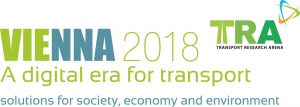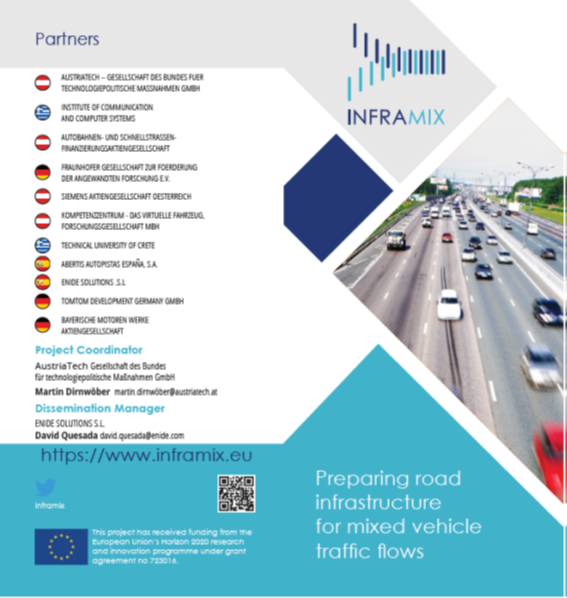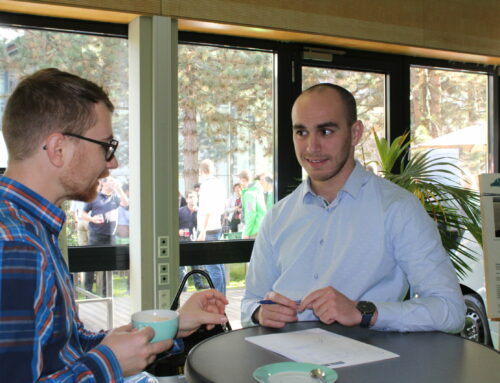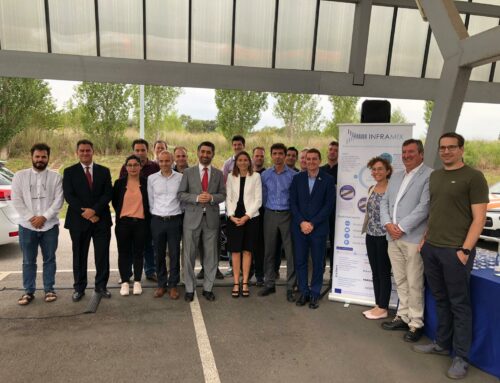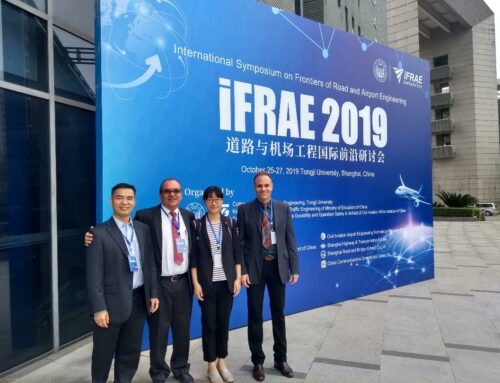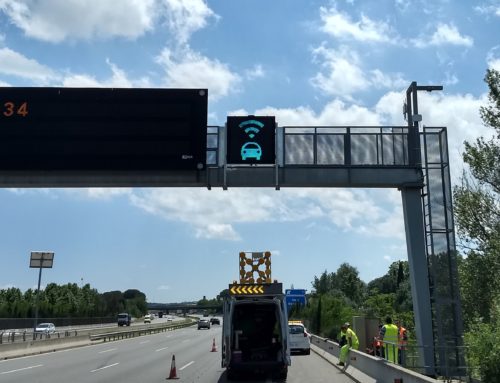TRA2018 CONFERENCE HIGHLIGHTS
INFRAMIX project was presented during the Transport Research Arena 2018 (TRA) Conference at Vienna, which has taken place from 16th to 19th April in Vienna, Austria with a successful result. Among the different expositions, Dr. Angelos Amditis and Mr. Martin Dirnwöber represented the project.
About TRA 2018
TRA 2018 was hosted and organized by the Federal Ministry for Transport, Innovation and Technology as chair of the Management Committee, together with the Austrian Institute for Technology as chair of the Programme Committee and AustriaTech as chair of the Organising Committee. The conference has been co-organised by the European Commission and supported by CEDR and the European Technology Platforms ERTRAC, ERRAC, WATERBORNE and ALICE, ETRA, ECTP, and ACARE.
In the keynote, Mr. Gerd Leonhard, Author and CEO of The Futures Agency, talked at the opening session about the importance of new technologies and the role of humans in the digital world of mobility. This futurist catalogued by Wired Magazine as one of the 100 most influential people in Europe (2015), has presented at more than 1700 events in 60+ countries since 2004 to Google, Sony, WWF, Siemens and many others.
“To meet the future transportation needs of urban centers, we need to organize the transport of people and goods more smartly, efficiently and sustainably. Networking, robotization and artificial intelligence can all contribute significantly.”, Mr. Leonhard mentioned.
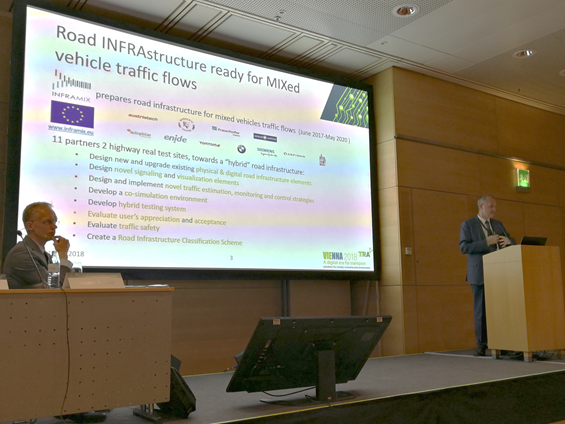
Dr Amditis during the INFRAMIX presentation at TRA2018
Day 1
On Monday, April 16, 2018, INFRAMIX project was presented during the session “Connected and Automated Transport – Automated transport: enabling methods and technologies” which addressed topics such as automated driving, digitization, and innovations in infrastructure. It was presented under the title “Advances in Road Infrastructure, both physical and digital, for mixed vehicle traffic flows”.
INFRAMIX in a nutshell
How to manage a hybrid road infrastructure for automated and conventional driving?
Dr. Angelos Amditis from ICCS, gave answers to this question, presented the main fields of innovation for road transport in the future and explained how digitization tends to be an important opportunity for this scope.
INFRAMIX aims to prepare a road infrastructure for mixed vehicle traffic flow. The project is running within the period from June 2017 to May 2020. The INFRAMIX project is a joint effort of 11 partners, working on two real test sites on the road, towards a “hybrid” road infrastructure.
During the session, were presented the perceptions of the INFRAMIX project: preparing the road infrastructure to support the coexistence of conventional and automated vehicles. Dr. Amditis explained that the key outcome will be a hybrid road infrastructure capable of handling the transition period and becoming the basis of future automated transportation systems. He emphasized on the fact that INFRAMIX uses new models of advanced microscopic traffic flow, advanced simulation techniques, innovative control strategies, as well as the appropriate elements, new and adapted from the existing physical and digital infrastructure, so as to achieve this objective. Finally, he mentioned that all these issues will be cross-validated against user appreciation and safety performance leading, among other topics, to a novel road infrastructure classification scheme.
The key elements of INFRAMIX are depicted in the following figure:
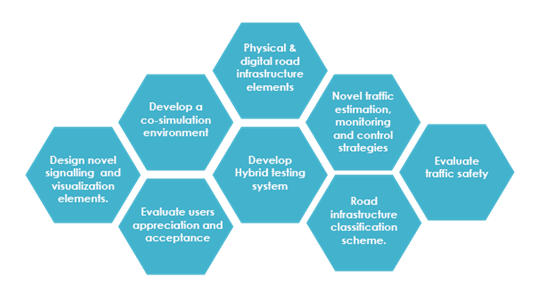
Key elements of INFRAMIX
The speaker presented the 8 different use cases of the project, grouped in 3 scenarios:
Scenario 1: Dynamic Lane Assignment (incl. speed recommendations)
- Real time lane assignment under dynamic penetration rate of automated vehicles
- Exceptional circumstances e.g. adverse weather conditions
- A conventional vehicle drives on a dedicated lane for automated vehicles
Scenario 2: Roadworks zones
- Single lane closure (e.g. short-term constructions)
- New lane design (e.g. long-term constructions)
Scenario 3: Bottlenecks
- Automated vehicles driving behavior adaptation in real time at sags
- Lane change advice to connected vehicles at bottlenecks
- Lane change advice combined with flow control at bottlenecks for all vehicles
Complementing his presentation, Mr. Amditis stressed the different tools to achieve these innovations in mobility and road transport:
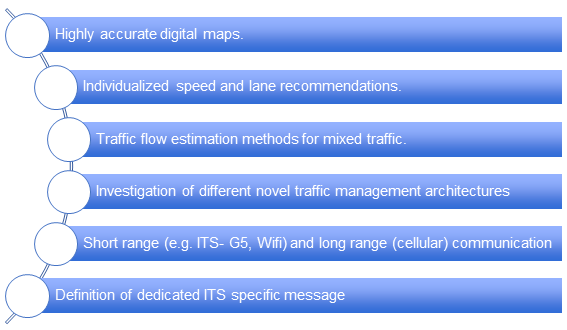
Key aspects to achieve INFRAMIX innovations
Finally, in this session, Dr. Amditis mentioned that the road infrastructure must be updated for mixed traffic: he explained the importance of establishing an infrastructure classification scheme and stressed that the development simulation and hybrid tests are of great value for future research. He also mentioned as concluding that the actual implementation of new traffic monitoring and control strategies for mixed traffic is extremely necessary.
The presentation was based on the article “Advances in road infrastructure, both physical and digital, for mixed vehicle traffic flow” submitted to the TRA 2018 conference and available at the INFRAMIX website. Additional information can be found here
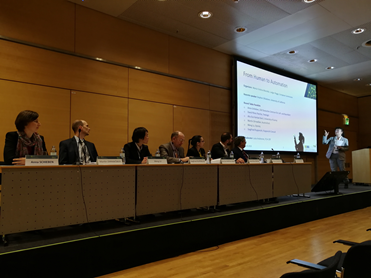
Mr. Dirnwöber, AustriaTech, panelist in the session on “Managing the transition to greater automation,”
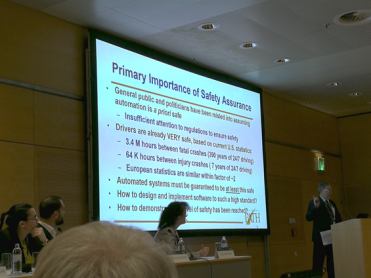
Dr Stephen Shladover, University of California
Day 2
On Tuesday, 17/04, the INFRAMIX project coordinator Mr. Martin Dirnwöber from AustriaTech, participated in the session “Managing the Transition Towards Higher Automation” as a panelist and had the opportunity to contribute on the topic of automated driving from the perspective of the infrastructure requests.
Mr. Dirnwöber, AustriaTech, panelist in the session on “Managing the transition to greater automation,” presented important aspects of INFRAMIX with regard to automated driving and digital infrastructure. The objective of the session was to present and discuss the progress in the field of Automated Road Transport, focusing on the safety of automated driving systems, the user acceptance, the human-centred design of automated vehicles, as well as the innovative modelling, the design and engineering of road infrastructure; and also the socioeconomic impacts. During the session, led by Ms. Luisa Andreona, Ricerche FIAT Center, Dr Stephen Shladover, from the University of California, introduced the importance of security assurance and commented that the general public and politicians have been misled into assuming that automation is a priori safe, as, in his view, there is no a specific demonstration of this fact.
Moreover, Dr Shladover mentioned that in order to ensure a high level of security in the software, the testing and quality assurance tools should be at the same level, before the final introduction of level 5 of automated driving – which means that the vehicle is able to drive anywhere and under any circumstance, at least in an equivalent level to human driving. In his perspective of the current state of the art, adoption of full automation for vehicles has a very long horizon.
Under this framework, Mr. Dirnwöber responded particularly to questions related to mixed traffic scenarios, where support from the infrastructure side is expected to substantially improve safety and efficiency.
Exhibition area
Finally, a brochure regarding the Inframix project and especially designed for the TRA Conference, was available at several spots of the event, including the booths of Asfinag, AustriaTech and Siemens.

